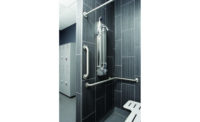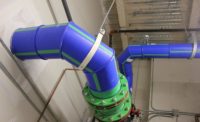Across commercial applications and in different climate zones, the combination of ambient air temperature, humidity and pipes’ surface temperature can have a big influence on the efficiency and economics of chilled water piping systems. As warm, moist air inside a commercial building or production facility migrates toward the cooler surface of pipes, moisture can collect on the surface of unprotected piping or insulation. If chilled water pipes are uninsulated, under-insulated, or, if the insulation is damaged, the system is vulnerable to corrosion risk, reduced performance and potentially, mold or mildew formation. And as degraded insulation causes a chilled water system to work harder, increased energy consumption can be another unwelcome consequence.
Specification considerations — thickness and condensation control
A properly specified insulation system for chilled water pipes includes insulation installed at the appropriate thickness. Additionally, the insulation must be properly installed on the system. The ASHRAE Standard 90.1 and the International Energy Conservation Code (IECC) requirements for pipe insulation specify the minimum standard for energy efficiency in commercial enclosures. However, the minimum pipe insulation thicknesses listed in ASHRAE 90.1 are not intended to prevent condensation on piping.
Information to determine the proper insulation thickness for condensation control as well as energy conservation can be accessed by using the NAIMA 3E Plus insulation thickness software program. Calculating insulation thickness for condensation control is not the time to be optimistic. Instead, specifiers should select the temperature and humidity design criteria that represent worst-case scenarios to determine the proper insulation thickness. The NAIMA 3E Plus calculating resource is available at www.pipeinsulation.org and www.owenscorning.com. An online version of the 3EPlus tool to calculate insulation thickness for condensation control is available at www.3EPlus.org.
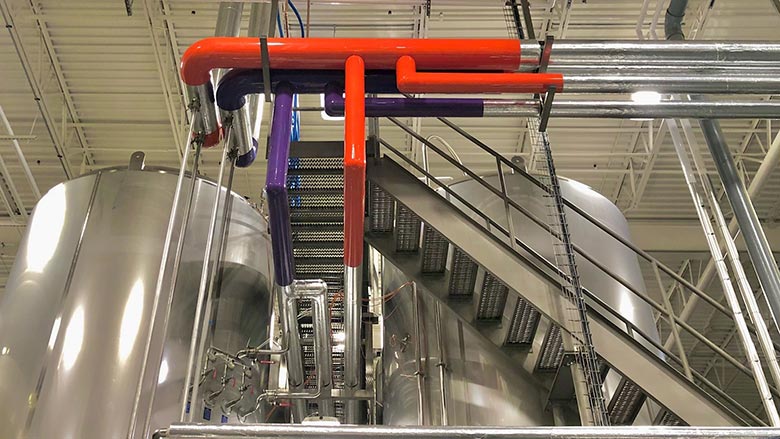 A properly specified insulation system for chilled water pipes includes insulation installed at the appropriate thickness.
A properly specified insulation system for chilled water pipes includes insulation installed at the appropriate thickness.
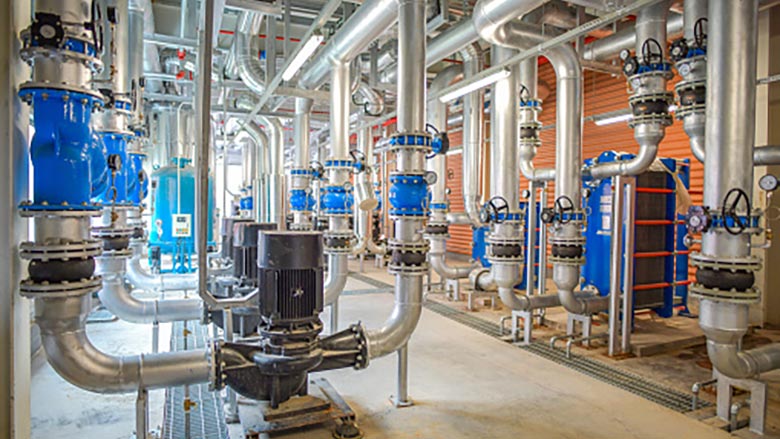 Calculating insulation thickness for condensation control is not the time to be optimistic. Instead, specifiers should select the temperature and humidity design criteria that represent worst-case scenarios to determine the proper insulation thickness.
Calculating insulation thickness for condensation control is not the time to be optimistic. Instead, specifiers should select the temperature and humidity design criteria that represent worst-case scenarios to determine the proper insulation thickness.After install — inspect insulation on chilled water pipes regularly
Once insulation is installed on chilled water pipes, it should be regularly inspected and maintained. Regular inspection can prevent small issues from evolving into larger and more costly problems. A visual inspection of the insulating system on mechanical pipes can reveal holes or penetrations in the material. Sometimes insulation can be compromised when it is removed to service the piping or ancillary components. It is not unusual to see situations where insulation was removed to complete a service repair and not replaced after the repair was made. Insulation can also be damaged from worker foot traffic or from the impact of other equipment.
During the visual inspection, it is important to be alert to signs of material damage. These signs include discolored material on piping or insulation that shows signs of deformation. Areas where insulation was removed from piping to facilitate any repair should be inspected to ensure the insulation was reinstalled at the proper thickness. A checklist can help workers take stock of any issues with insulation. Problems to look for include:
- Outer jacketing that is discolored or damaged;
- A penetration in the jacketing;
- Areas of piping where insulation is loose or missing;
- Areas of damp insulation;
- Mold or mildew formation on the jacketing material;
- Sagging jacketing or material that is puling away from the pipe/support;
- Expansion or contracting joints that appear to be functioning incorrectly; and
- Any signs of corrosion on valves or piping components.
Sometimes the most obvious sign of a problem with insulation is not obvious from a visual inspection of piping components. A sudden increase in energy bills as the system uses more energy to deliver chilled water can indicate a problem with insulation.
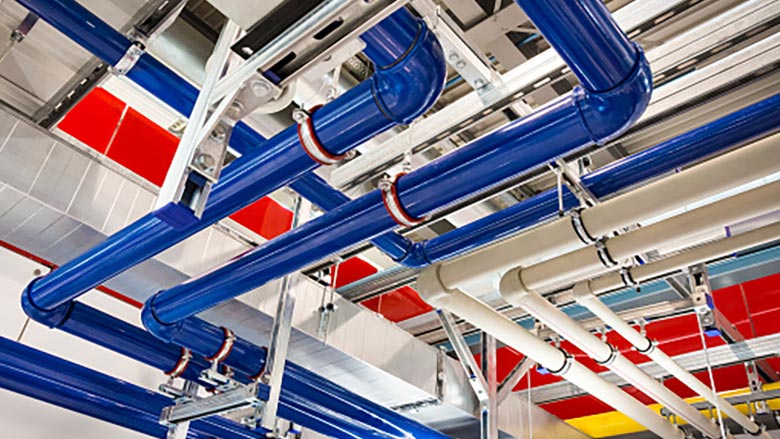 Durability and longevity of the material is another consideration when specifying or repairing insulation. Choosing an all-service jacket with a factory-applied vapor retarder can avoid tears that can arise with stapled jacketing.
Durability and longevity of the material is another consideration when specifying or repairing insulation. Choosing an all-service jacket with a factory-applied vapor retarder can avoid tears that can arise with stapled jacketing.Remediating issues
When installing insulation on chilled water systems or replacing insulation that has been damaged/degraded, select a material that does not require fileting, digging or channeling — a procedure used to remove insulation to accommodate pipe components like valves, cuppings and hangers. Choosing a properly sized material that can be tailored to fit around the copper, iron and PVC pipes can support easy, efficient insulation. When specifying a material for metric pipe applications, choose insulation sized in accordance with ASTM C585 Standard Practice for Inner and Outer Diameters of Thermal Insulation for Nominal Sizes of Pipe and Tubing to support accurate sizing.
Durability and longevity of the material is another consideration when specifying or repairing insulation. Choosing an all-service jacket with a factory-applied vapor retarder can avoid tears that can arise with stapled jacketing. A jacket equipped with an adhesive closure system can provide a positive, mechanical vapor sealing of the longitudinal jacket seam to defend against vapor infiltration. Circumferential joints between sections of pipe must be protected with butt strips to avoid liquid or vapor infiltration.
Finally, consider how the specification of insulation can support a facility’s environmental stewardship efforts. For example, selecting an insulation that is GreenGuard certified for low chemical emissions and contains recycled content can help support these environmental values. And it’s always good to keep in mind that strategies that reduce energy consumption also contribute to reduced greenhouse gas emissions.
Chilled water systems contribute to efficient processes and occupant comfort throughout the enclosure. Protecting these systems with an insulating system — and keeping the system maintained — can also help support process efficiencies and energy efficiency.


